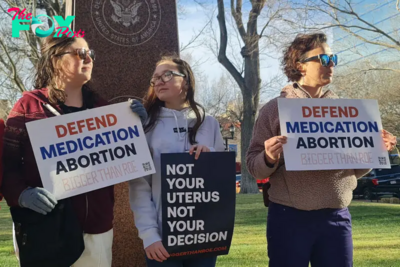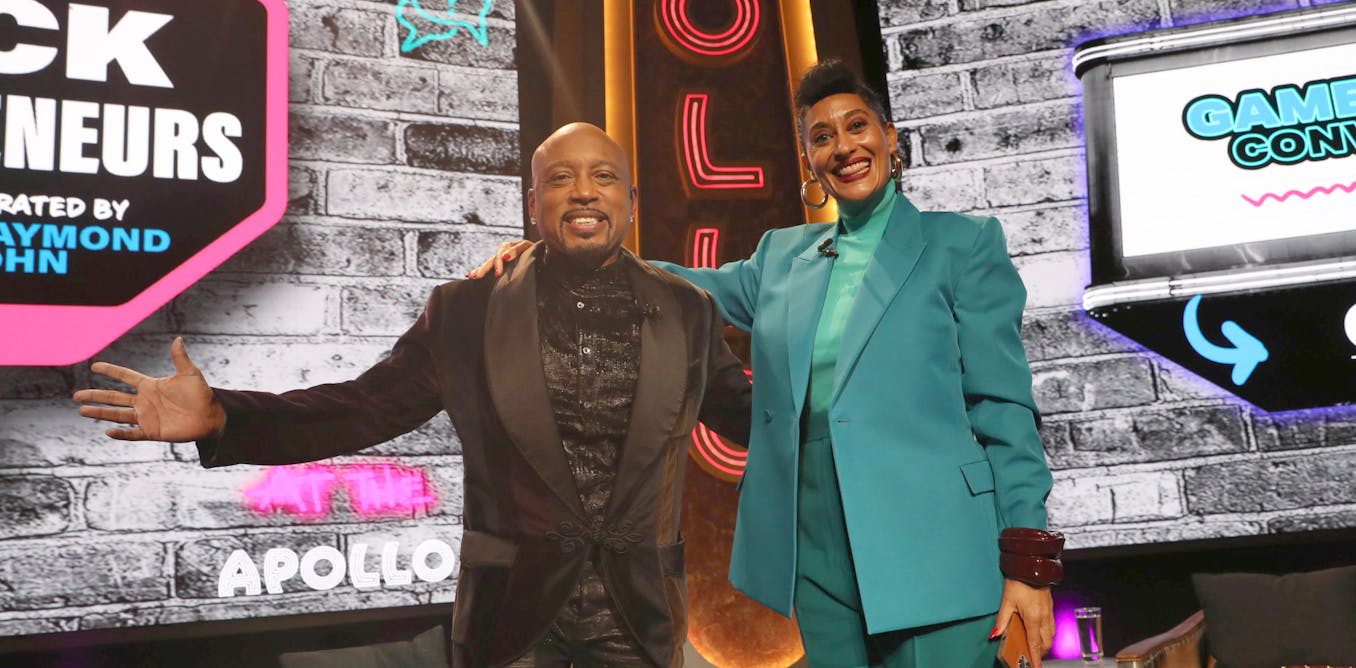Politics
Supreme Court rejects settlement with OxyContin maker Purdue Pharma over legal protections for the Sackler family that owned the company
The Supreme Court ruled 5-4 against an estimated US$6 billion Purdue Pharma bankruptcy plan on June 27, 2024, that would have shielded the Sackler family – which owned and controlled the company – from legal liability.
Hundreds of thousands of Americans have died from opioid-related overdoses since Purdue rolled out OxyContin in 1996. The company helped spur a public health crisis through its deceptive marketing and aggressive sales of OxyContin, a prescription opioid painkiller.
The company, but not the family, sought bankruptcy protection in 2019 in exchange for contributions to a global settlement deal. That settlement would have forever protected the Sacklers – as well as hundreds of affiliates and other Purdue Pharma insiders – from all opioid-related civil claims. Because the Sacklers have said they would reject any deal without legal immunity, this Supreme Court ruling makes the fate of this settlement unclear.
The Conversation asked Temple University law professor Jonathan Lipson to explain what the ruling in this case, Harrington v. Purdue Pharma, means for the company, the Sacklers, people harmed by OxyContin and the public.
What does this ruling mean?
In the near term, it means that the effort by Purdue and the Sacklers to limit their liability will go back to the bankruptcy court, where the deal will probably be renegotiated. In the long term, it means that powerful people cannot use their company’s bankruptcy to escape accountability.
This ruling will further delay the roughly $6 billion promised under Purdue’s plan. So far, companies involved in the manufacturing, distribution and sale of opioids have reached settlements that are contributing $50 billion to efforts to abate the opioid crisis.
The majority was careful to say that its opinion was “narrow” and should not upset similar prior deals. But, going forward, corporate insiders will no longer be able to use their companies’ bankruptcies to force creditors to give up claims. In many ways, this decision simply confirms the status quo: If you have liability for misconduct, you cannot latch onto a company’s bankruptcy to get out of it.
You either have to defend the claims in court or file for bankruptcy yourself.

What did the court object to?
The technical term for what this very wealthy family sought – and what the court’s majority rejected – is a “nonconsensual third-party release.”
“Release” is a bit of a misnomer, though, because that is really a contractual concept, and there is nothing contractual about what the Sacklers demanded. They wanted an injunction from a federal bankruptcy court that would forever bar anyone who might try to hold them accountable from suing them for their role at Purdue Pharma when the company committed two sets of confessed drug-marketing crimes.
Until now, only bankruptcy courts could provide such releases, and appellate courts have been split about the practice for many years.
On the one hand, many lawyers and scholars laud these releases because they can increase the amounts paid to creditors following bankruptcy. They promote settlements, which can reduce the amount and cost of litigation.
On the other hand, the U.S. Bankruptcy Code says nothing about these releases. Congress amended that code in 1994 to permit them for asbestos-related liability, but the majority in the Purdue case recognized that these releases aren’t approved for any other purpose.
The petitioner before the Supreme Court was U.S. Trustee William Harrington. Trustees are Justice Department officials who serve as regional watchdogs of the bankruptcy system. They have long argued that these releases go too far because they give too much discretion and power to bankruptcy judges.
How did the majority explain its rationale?
The court’s majority said the releases went too far because they were outside the text of the Bankruptcy Code. Most Supreme Court justices view themselves as “textualists,” meaning that if Congress has gone to the trouble of writing a statute, courts should apply it carefully and within the limits legislators defined.
Here, there was no doubt that Purdue could extinguish its own liability in bankruptcy. The problem was that “rather than seek to resolve claims that substantively belong to Purdue,” Justice Neil Gorsuch wrote for the majority, Purdue’s plan “seeks to extinguish claims against the Sacklers that belong to their victims” even though “precisely nothing” in the Bankruptcy Code permitted that.
Gorsuch was joined by Justices Clarence Thomas, Samuel Alito, Amy Coney Barrett and Ketanji Brown Jackson.
In an emotional dissent, Justice Brett Kavanaugh focused on the consequences he fears.
“With the current plan now gone and non-debtor releases categorically prohibited, the consequences will be severe,” he wrote in a dissent joined by Justices Elena Kagan, Sonia Sotomayor and Chief Justice John Roberts.
According to the dissent, people harmed by opioids might never get any compensation from a settlement with Purdue Pharma and the Sackler family.
Kavanaugh also suggested that claims against the Sacklers were no different than claims against Purdue. But it has long been a basic tenet of corporate law that owners and other kinds of shareholders are legally separate from the corporations they own.
What happens next?
The case will return to the bankruptcy court.
Purdue, the Sacklers and lawyers representing people harmed by OxyContin will probably renegotiate the plan and seek individualized consent to release the Sacklers. This is actually a very common approach – Purdue was pushing the boundaries by doing this without the consent of everyone who it harmed because not everyone who was filing these lawsuits agreed to the terms of the settlement.
In the end, the Sacklers may have to pay more than they previously promised. And they will run the risk that some people harmed by OxyContin won’t agree with the revised terms and instead will sue them outside of the bankruptcy system.
My guess is that the Sacklers will be willing to pay enough to reduce this risk, rather than blow up the plan entirely.
But they may throw in the towel and go back to a regular court to defend themselves. If they do, they would increase the chances that they will be prosecuted individually – which they clearly do not want.
-

 Politics4h ago
Politics4h agoWhy Trump Actually Needs Mexico
-

 Politics4h ago
Politics4h agoMan Convicted of Killing Laken Riley Sentenced to Life in Prison Without Parole
-

 Politics10h ago
Politics10h agoHow the Biden Administration Protected Abortion Pill Access—and What Trump Could Do Next
-

 Politics10h ago
Politics10h agoWhy Trump’s Tariffs Could Raise Grocery Prices
-

 Politics21h ago
Politics21h agoThe First Trans Member of Congress Expected Pushback Like Mace’s Bathroom Rule
-

 Politics21h ago
Politics21h agoNew York Prosecutors Oppose Dismissing Trump’s Hush Money Conviction
-

 Politics1d ago
Politics1d agoWhite House Christmas Tree Is a Symbol of Resilience for Hurricane-Hit North Carolina Farms
-

 Politics1d ago
Politics1d agoHakeem Jeffries Wins Reelection as House Democratic Leader Despite Party’s Losses




















